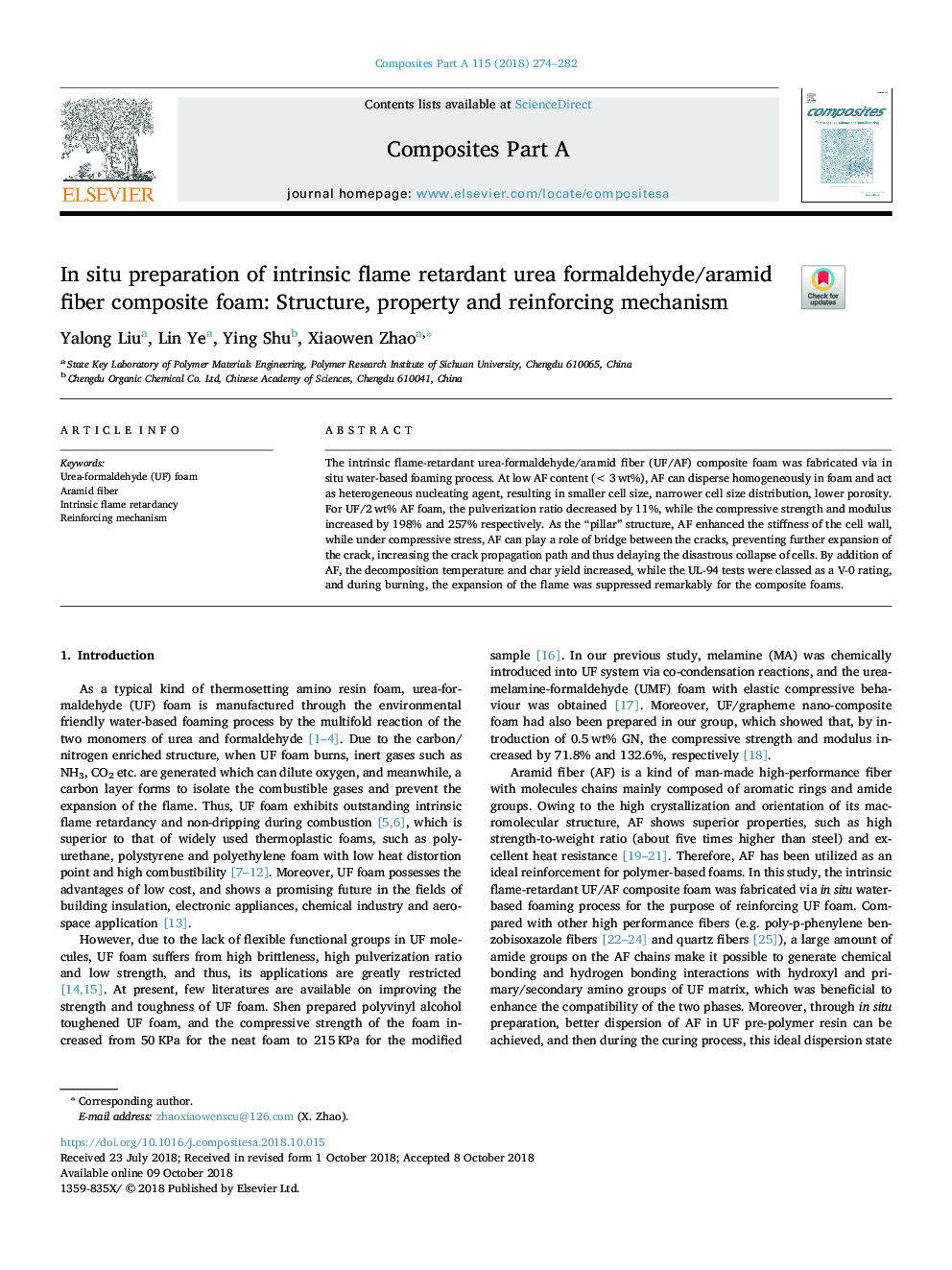| Article ID | Journal | Published Year | Pages | File Type |
|---|---|---|---|---|
| 11026792 | Composites Part A: Applied Science and Manufacturing | 2018 | 9 Pages |
Abstract
The intrinsic flame-retardant urea-formaldehyde/aramid fiber (UF/AF) composite foam was fabricated via in situ water-based foaming process. At low AF content (<3â¯wt%), AF can disperse homogeneously in foam and act as heterogeneous nucleating agent, resulting in smaller cell size, narrower cell size distribution, lower porosity. For UF/2â¯wt% AF foam, the pulverization ratio decreased by 11%, while the compressive strength and modulus increased by 198% and 257% respectively. As the “pillar” structure, AF enhanced the stiffness of the cell wall, while under compressive stress, AF can play a role of bridge between the cracks, preventing further expansion of the crack, increasing the crack propagation path and thus delaying the disastrous collapse of cells. By addition of AF, the decomposition temperature and char yield increased, while the UL-94 tests were classed as a V-0 rating, and during burning, the expansion of the flame was suppressed remarkably for the composite foams.
Keywords
Related Topics
Physical Sciences and Engineering
Materials Science
Ceramics and Composites
Authors
Yalong Liu, Lin Ye, Ying Shu, Xiaowen Zhao,
